Note: If an image ever fails to appear - refresh your page, it really is there
Flags of the United States of America
Military and Naval Flags of the United States of America
Historically, the armed forces of the United States were defined in terms of the land and naval forces of the United States, as described in the Constitution. The land force is the United States Army and its components. The US Air Force is derived from the US Army Air Corps. The Army has reconstituted the former Air Corps as a branch within the Army. (Interestingly enough, some think that the Air Force is currently qualifying more drone "pilots" than it is aircraft pilots.) The naval forces of the United States are the U.S. Navy, and its reserve components. There are two additional uniformed services, the Marines, and the U.S. Coast Guard, who both operate as a part of the naval forces during wartime.
Flags of the United States Navy
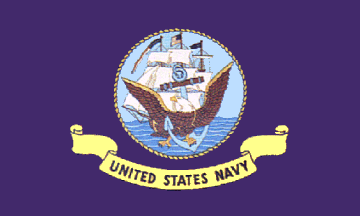
US Navy Flag
|
Flag of the United States Navy
The United States Navy is a branch of the U.S. armed forces responsible for sea-based warfare. The U.S. Navy is the largest navy in the world. Its mission is to maintain, train, and equip combat-ready naval forces capable of winning wars, deterring aggression, and maintaining freedom of the seas.
|
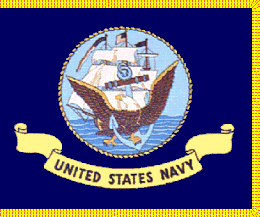
US Navy Flag
(ceremonial)
|
Flag of the United States Navy (ceremonial)
This version of the United States Navy flag is used for parades, indoors, and ceremonial occasions, fringes just don't stand up to frequent outdoor use.
|

Secretary of Navy Flag
|
Flag of the Secretary of Navy 1867-1959
The Secretary of the Navy is the civilian head of the Department of the Navy and reports to the Secretary of Defense.
|

One Star Admiral Flag
(outdoor)
|
Navy Rear Admiral (Lower Half)
In the United States Navy Rear Admiral (lower half) (RDML) is a one-star flag officer. Rear admiral (lower half) ranks above captain and below rear admiral. Rear admiral (lower half) is equivalent to the rank of brigadier general in the other uniformed services, and equivalent to the rank of commodore in most other navies. In the United States uniformed services, rear admiral (lower half) replaced the rank of commodore in 1985.
|
|
|
Navy Rear Admiral
Lower Half (cermonial) |
|
Restricted Line Officers
|
Restricted Line Officers are officers not eligible to command at sea, such as Supply, Medical, and JAG Officers. |
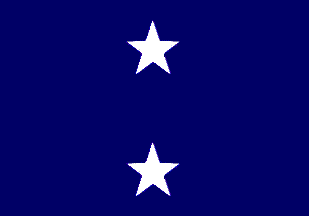
Two Star Admiral Flag
(outdoor)
|
Navy Rear Admiral (Upper Half)
In the United States Navy a Rear Admiral, also referred to as Rear Admiral (upper half), is a two-star flag officer. Rear admiral ranks above rear admiral (lower half) and below vice admiral. Rear admiral is equivalent to the rank of major general in the other uniformed services. It is the highest permanent rank during peacetime in the uniformed services; all higher ranks are temporary ranks linked to specific positions (although virtually all officers who are promoted to three-star rank or higher are approved to retire at their highest earned rank).
|
|
|
Navy Rear Admiral - Upper Half (ceremonial) |
|
Restricted Line Officers |
Restricted Line Officers are officers not eligible to command at sea, such as Supply, Medical, and JAG Officers.
|
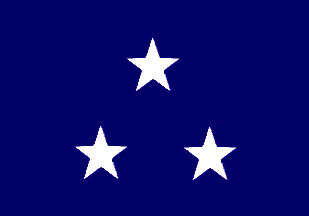
Three Star Admiral Flag
(outdoor)
|
Navy Vice Admiral
A vice admiral in the United States Navy typically commands one of the five numbered U.S. naval fleets, which have both wartime and peacetime missions. A notch below full admiral and just above rear admiral, the holders of this rank sport three five-pointed silver stars on their uniform and a shoulder board with three stripes. Their command flag is three white stars set against a blue backdrop.
|
|
|
Navy Vice Admiral (ceremonial) |
|
Restricted Line Officers |
Restricted Line Officers are officers not eligible to command at sea, such as Supply, Medical, and JAG Officers.
|
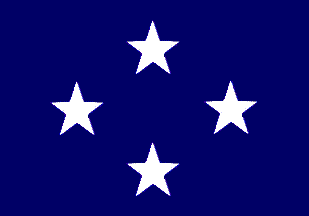
Four Star Admiral Flag
(outdoor)
|
Navy Admiral
An admiral is a top commissioned officer in the United States Navy, on par with a U.S. Army general, and is outranked only by a fleet admiral. However, fleet admiral is no longer considered an active rank - there have been none appointed since World War II - making admiral effectively the topmost naval rank. Admirals wear four silver five-point stars and shoulder boards with four gold stripes to indicate their rank.
|
|
|
Navy Admiral (ceremonial) |
|
Restricted Line Officers |
Restricted Line Officers are officers not eligible to command at sea, such as Supply, Medical, and JAG Officers.
|
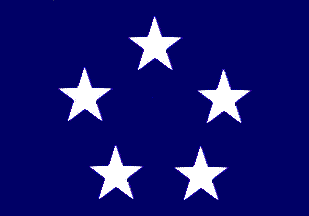
Five Star Admiral Flag
(outdoor)
|
Navy Fleet Admiral
A Fleet Admiral of the United States Navy (FADM) is a five-star flag officer rank, and it is considered to be the highest possible rank attainable in the United States Navy. Fleet Admiral ranks immediately above admiral and is equivalent to General of the Army and General of the Air Force. The Fleet Admiral rank is reserved for wartime use only and the grade is not currently active.
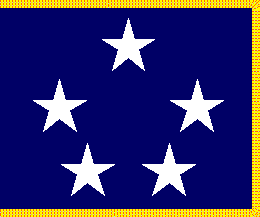 Navy Fleet Admiral (ceremonial) Navy Fleet Admiral (ceremonial) There have been no (five-star) Fleet Admirals appointed since World War II; therefore the relevant rank flag, though authorized and official, is not flown now.
|
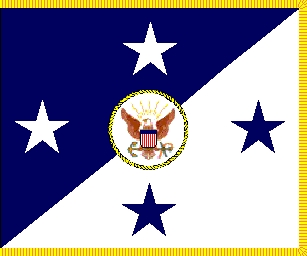
CNO Flag
|
Navy Chief of Naval Operations
Like the color of the Chief of Staff, U.S. Army, the CNO's color is a diagonal bicolor, in this case dark blue over white. In the center is the badge of the Navy. The stars are arranged in a diamond pattern, as for the rank flag of a full admiral. Dimensions are 4' 4" at the hoist by 5' 6" on the fly with 2 1/2" fringe--the same as for the colors of the other services' chiefs of staff/commandants.
|
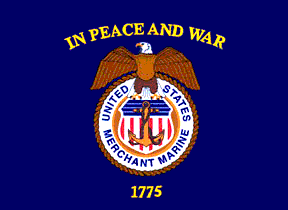
USMM Flag
|
US Merchant Marine
|
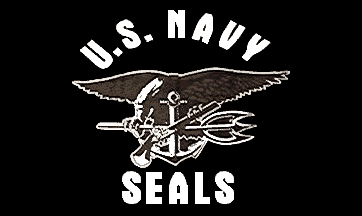
SEAL Flag
|
US Navy Seals
|
Flag
|
Flag
|
Flag
|
Flag
|
Flag
|
Flag
|
Flag
|
Flag
|
Flag
|
Flag
|
Flag
|
Flag
|
Flag
|
Flag
|
Flag
|
Flag
|
Flags of the United States Marine Corps
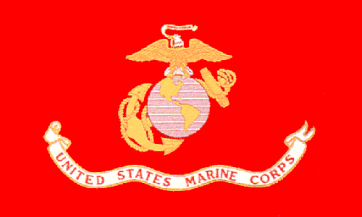
US Marines Flag
|
Flag of the United States Marine Corps
The United States Marine Corps is a branch of the U.S. armed forces responsible for providing force protection from the sea. The Marine Corps is a component of the Department of the Navy; however, in the military leadership structure, the Marine Corps is a separate branch.
|
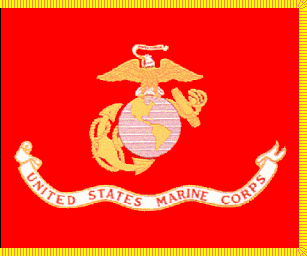
US Marine Corps Flag
(ceremonial)
|
Flag of the United States Marine Corps (ceremonial)
This version of the Marine Corps flag is used for parades, indoors, and ceremonial occasions, fringes don't stand up to frequent outdoor use.
|
Flag
|
Flag
|
Flag
|
Flag
|
Flag
|
Flag
|
Flag
|
Flag
|
Flag
|
Flag
|
Flag
|
Flag
|
Flag
|
Flag
|
Flag
|
Flag
|
Flag
|
Flag
|
Flag
|
Flag
|
Flag
|
Flag
|
Flag
|
Flag
|
Flag
|
Flag
|
Flag
|
Flag
|
Flag
|
Flag
|
Flag
|
Flag
|
Flags of the United States Coast Guard
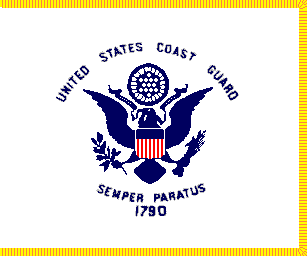
US Coast Guard Flag
(ceremonial)
|
Flag of the United States Coast Guard (ceremonial)
Although the United States Coast Guard is not part of the Department of Defense, it is considered a branch of the military. Formally, today it is part of the Homeland Defense Department today, but began as part of the US Customs in 1790 as the US Revenue Cutter Service. In 1915, the U.S. Revenue Cutter Service and the U.S. Life-Saving Service (formed in 1848), which had been operating under the administrative control of the Revenue Cutter Service since it was formed, merged to form the U.S. Coast Guard. In 1939, the U.S. Lighthouse Service (originally the U.S. Lighthouse Establishment, formed in 1789) was also merged into the Coast Guard.
|
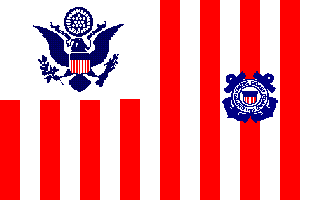
US Coast Guard Ensign
|
Ensign of the United States Coast Guard
The Coast Guard, like the Air Force, has two distinctive flags. One is an ensign for use by Coast Guard ships and cutters and shore establishments; the other is a military standard for use on ceremonial occasions.
The ensign is white with vertical red stripes and a white canton. In the canton is a dark blue U.S. Coat of Arms; in the fly is the Coast Guard badge. (The same flag, without the Coast Guard badge, is used by the U.S. Customs Service.) The Coast Guard Ensign is always flown together with the National Ensign, never on its own.
|
Flag
|
Flag
|
Flag
|
Flag
|
Flag
|
Flag
|
Flag
|
Flag
|
Flag
|
Flag
|
Flag
|
Flag
|
Flag
|
Flag
|
Flag
|
Flag
|
Flag
|
Flag
|
Flag
|
Flag
|
Flag
|
Flag
|
Flag
|
Flag
|
Flag
|
Flag
|
Flag
|
Flag
|
Flag
|
Flag
|
Flag
|
Flag
|
|